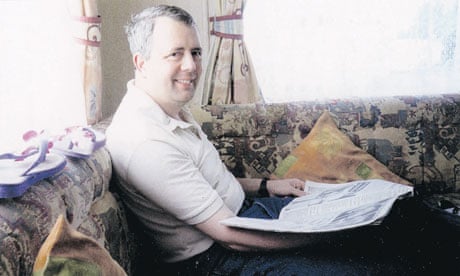A highly secret bomb-making experiment which cost a government scientist his life had been poorly planned and organised, an inquest jury ruled today.
Terry Jupp suffered extensive burns when the tests – intended to discover more about al-Qaida's bomb-making capabilities – went wrong in August 2002.
The jury at an inquest at Southend, Essex, concluded that planning and risk assessment had not been appropriate; a small scale test could have been carried out in advance; adequate regard was not paid to personal protective equipment; and communication and organisation at the trials appeared inadequate. They returned a narrative verdict that Jupp died as the result of an accident at work. Jupp, 46, who had worked for the Ministry of Defence for more than 20 years, was a member of a joint Anglo-American team conducting the experiment on the island of Foulness, part of the MoD's weapons testing site at Shoeburyness, Essex.
The Guardian has learned that he and his colleagues were making bombs from three over-the-counter ingredients, including ammonium nitrate fertiliser, to learn whether al-Qaida could develop a radiological dispersal device, or so-called dirty bomb. Parts of the four-week inquest were conducted in camera. Coroner Peter Dean said this was because of the "sensitivity and highly classified nature" of the evidence. The inquest heard that the research had been commissioned by an official from the US National Security Council who was identified only as Person A. This individual declined to give evidence, but said in a statement that the precise nature of the research needed to remain secret as the results could be "catastrophic" if they fell into the wrong hands. Person A said the mixture that ignited causing Jupp's death had not been authorised.
Another US official, Person B, said in a statement that the Americans had been concerned that their British colleagues were planning experiments that were potentially highly dangerous.
Jupp was working with a 10kg mixture in a paint container when it unexpectedly ignited. The jury heard he was engulfed in a fireball, causing horrific injuries.
The jury ruled that Jupp had been reassured by a risk assessment, by conversations with others, and his own experience of the chemicals involved. The inquest heard that he and an American colleague had mixed up the chemicals in a "modified cement mixer" for seven to eight minutes before decanting them into a 20-litre container.
Jupp was emptying the mixture, the consistency of "thick paste", into a 20 litre paint container when it ignited.
Detective Sergeant Paul Easterbrooke, an MoD police officer who investigated Mr Jupp's death, said: "Mr Jupp prepared a pocket for the booster charge, as he scooped out an area he was overwhelmed by a fireball as the mixture spontaneously ignited. The mixture spontaneously combusted causing Mr Jupp's injuries."
The scientist died of his injuries six days later. His family had criticised the eight-year wait they had endured to have an inquest and the secrecy surrounding the case.
The coroner said: "Terry's family have remained a dignified presence at all times through every stage of what has been a very difficult journey for them since his loss. One hopes as many questions as possible have been answered for them."
Jupp's widow Pat said she thought the jury had assessed the evidence correctly. "The Ministry of Defence have lost a highly experienced, loyal, dedicated scientist. I feel very proud in the knowledge that he helped to save thousands of lives doing the research work that he carried out."
